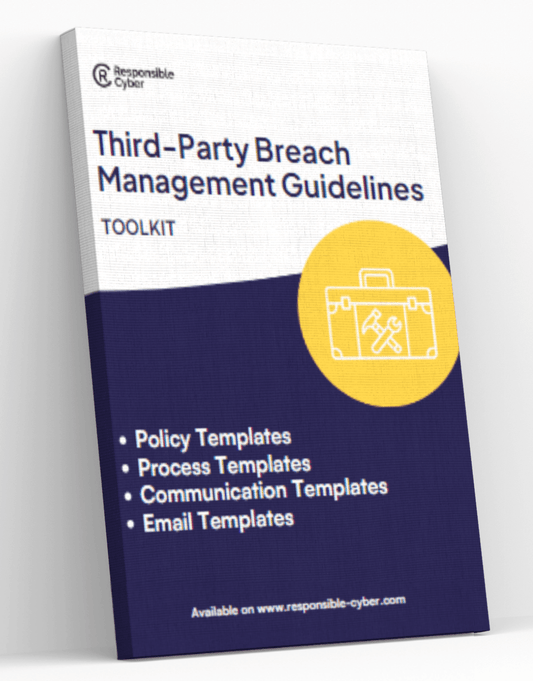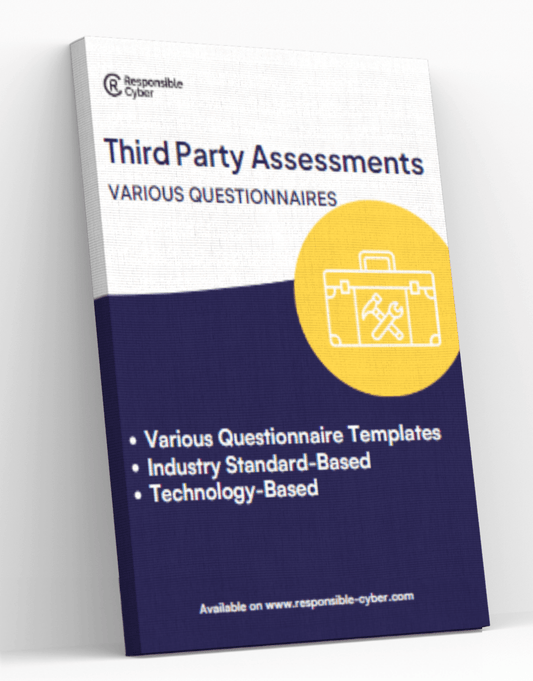4th Party Supplier Risk: Comprehensive Strategies and Solutions

In the intricate landscape of global supply chains, the complexity doesn't stop with direct (3rd party) suppliers. Businesses must also grapple with the risks presented by 4th party suppliers—those entities that your direct suppliers rely on to fulfill their obligations to your business. As supply chains become more layered and interconnected, the potential disruptions and vulnerabilities from 4th party relationships increasingly threaten operational resilience, compliance, and security. This article explores the concept of 4th party supplier risk, detailing strategies to manage these risks effectively and introducing tools like RiskImmune that can enhance these efforts.
Understanding 4th Party Supplier Risk
4th party suppliers are one step removed from direct engagement with your company but play a crucial role in your supply chain's ecosystem. These entities might be subcontractors, manufacturers of components used by your suppliers, or any service providers that support your direct suppliers. Despite their indirect relationship with your business, failures, breaches, or disruptions at this level can cascade through the supply chain, leading to significant impacts.
The Importance of Managing 4th Party Supplier Risk
The risks associated with 4th party suppliers can be diverse and multifaceted, including:
- Operational Risks: Disruptions in a 4th party’s operations can directly affect your 3rd party supplier’s ability to meet contractual obligations, impacting your business operations.
- Cybersecurity Risks: Data breaches or cybersecurity vulnerabilities at the 4th party level can compromise your data and that of your customers, especially if these parties are involved in processing or storing sensitive information.
- Compliance Risks: Non-compliance with laws and regulations by a 4th party can have legal repercussions for your company, especially in tightly regulated industries like finance and healthcare.
- Reputational Risks: Issues such as poor labor practices or environmental violations by 4th party suppliers can reflect negatively on your company’s brand and reputation.
Strategic Approaches to Managing 4th Party Supplier Risk
1. Extended Due Diligence
The first line of defense in managing 4th party risk is conducting thorough due diligence not only on your direct suppliers but also on key 4th party suppliers. This process involves:
- Assessing the criticality of each 4th party: Understanding the role and impact of 4th party entities in your supply chain helps prioritize risk management efforts.
- Reviewing the 4th party’s risk management practices: Evaluating how these suppliers manage risks within their operations and what controls they have in place.
- Performing regular audits and assessments: Conducting audits, either directly or through third parties, to verify compliance and risk management practices.
2. Contractual Controls
Incorporating risk management clauses in contracts with your 3rd party suppliers that mandate transparency and control over 4th party engagements is crucial. These clauses may include:
- Right to audit 4th parties: Ensuring your business can conduct audits on 4th party suppliers, either directly or through a third party.
- Compliance and performance requirements: Specifying the required compliance standards and performance metrics that 4th parties must meet.
- Notification of changes: Obligating 3rd party suppliers to notify your company of any significant changes in their use of 4th party suppliers.
3. Continuous Monitoring
Ongoing monitoring of both 3rd and 4th party supplier activities is essential to promptly identify and respond to new risks and changes in risk exposure. Monitoring techniques include:
- Utilizing technology platforms for real-time risk assessments: Leveraging software that provides continuous insights into 4th party activities and risk levels.
- Developing risk-based performance metrics: Tracking performance indicators that can signal potential risk issues with 4th party suppliers.
4. Development of Contingency and Response Plans
Effective risk management requires not only identifying and mitigating risks but also planning for potential failures. Contingency planning for 4th party supplier risks might involve:
- Identifying alternative suppliers: Building relationships with multiple suppliers to reduce dependency on any single supply chain entity.
- Creating incident response strategies: Developing and testing response plans for different risk scenarios to ensure quick and effective action when issues arise.
5. Regular Reviews and Risk Reporting
Regularly reviewing the risk management process and integrating 4th party risk into the overall enterprise risk management (ERM) reporting helps maintain an up-to-date understanding of supply chain vulnerabilities. This should include:
- Scheduled risk reviews: Periodically reassessing risks associated with 4th party suppliers and updating risk management strategies accordingly.
- Stakeholder reporting: Providing risk reports to internal stakeholders to ensure alignment and informed decision-making.
Leveraging RiskImmune for Enhanced 4th Party Supplier Risk Management
At the end of the spectrum, handling 4th party supplier risk can be complex and resource-intensive. Tools like RiskImmune offer a robust platform that simplifies the complexities of managing 4th party risks. RiskImmune automates risk assessments, facilitates real-time monitoring, and provides actionable insights that can help businesses proactively manage their supply chain risks. By integrating such advanced tools into their risk management frameworks, companies can achieve a more holistic, responsive approach to managing 4th party supplier risks.
Conclusion
As supply chains become more complex and interdependent, the significance of managing 4th party supplier risks cannot be overstated. By implementing strategic risk management practices, leveraging contractual controls, and utilizing advanced tools like RiskImmune, businesses can safeguard their operations from the ripple effects of 4th party disruptions and maintain robust, resilient supply chains. Effective 4th party risk management not only protects against potential disruptions but also contributes to sustainable business growth and operational excellence.
Read more:
- Addressing Universal Business Challenges: Cybersecurity, Supply Chain, and Regulatory Compliance
- Comprehensive Guide to Third-Party Risk Management Policy
- Developing a Comprehensive Third-Party Risk Management Program: A Legal Compliance Guide
- The Future of Third-Party Risk Management and Legal Compliance: Emerging Trends and Technologies







